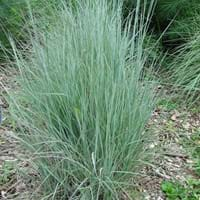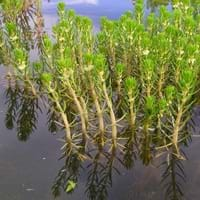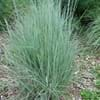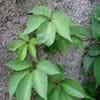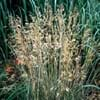Life Span
Perennial
Perennial
Origin
North America, United States, Canada
Australia, New Zealand
Types
not available
Not available
Habitat
Hillside, Prairies, Roadsides
Lakes, Ponds, stream banks
USDA Hardiness Zone
2-7
8-12
Sunset Zone
1a, 1b, 2a, 2b, 3a, 3b, 4, 5, 6, 7, 8, 9, 10, 11, 12, 13, 14, 15, 16, 17, 18, 19, 20, 21, 22, 23, 24
21,22
Habit
Upright/Erect
Upright/Erect
Minimum Width
Not Available
Flower Color
Not Available
Dark Red, Ivory
Flower Color Modifier
Bicolor
Bicolor
Fruit Color
Not Available
Yellow Brown
Leaf Color in Spring
Blue Green, Gray Green
Green, Light Green
Leaf Color in Summer
Light Green
Green
Leaf Color in Fall
Yellow, Red, Bronze, Orange Red
Green
Leaf Color in Winter
Tan, Bronze
Green
Leaf Shape
Grass like
Pinnate
Plant Season
Summer, Fall, Winter
Spring, Summer, Fall
Sunlight
Full Sun
Full Sun, Partial Sun
Type of Soil
Loam, Sand
Clay, Loam, Sand
The pH of Soil
Acidic, Neutral, Alkaline
Acidic, Neutral
Soil Drainage
Average
Poorly Drained
Bloom Time
Summer, Late Summer
Late Spring, Early Summer, Summer
Tolerances
Drought
waterlogging
Where to Plant?
Container, Ground, Pot
In Water
How to Plant?
Divison, Seedlings
Cuttings, Divison, Seedlings
Plant Maintenance
Low
Medium
Watering Requirements
Requires watering in the growing season
Plant grows in water
In Summer
Lots of watering
Lots of watering
In Spring
Ample Water
Moderate
In Winter
Ample Water
Average Water
Soil pH
Acidic, Neutral, Alkaline
Acidic, Neutral
Soil Type
Loam, Sand
Clay, Loam, Sand
Soil Drainage Capacity
Average
Poorly Drained
Sun Exposure
Full Sun
Full Sun, Partial Sun
Pruning
No pruning needed in the early stages, Remove damaged leaves, Remove dead branches, Remove dead leaves
Prune regularly, Remove damaged leaves, Remove dead branches, Remove dead leaves
Fertilizers
No fertilizers needed
iron-rich fertilizer
Pests and Diseases
fungus, Leaf spot
Sap-Sucking Insects, Stem rot
Plant Tolerance
Drought
waterlogging
Flowers
Insignificant
Insignificant
Flower Petal Number
Single
Not Available
Foliage Texture
Fine
Fine
Foliage Sheen
Matte
Matte
Attracts
Bees
Not Available
Allergy
Not Available
Not Available
Aesthetic Uses
Not Used For Aesthetic Purpose
Water gardening
Beauty Benefits
Not Available
Not Available
Environmental Uses
Erosion control, Wildlife
Air purification
Medicinal Uses
Not Available
Not Available
Part of Plant Used
Whole plant
Not Available
Other Uses
Not Available
Not Available
Used As Indoor Plant
No
No
Used As Outdoor Plant
Yes
Yes
Garden Design
Dried Flower / Everlasting, Cutflower, Dried Flower/Everlasting, Groundcover, Mixed Border, Wildflower
Bog Garden, Container, Groundcover, Tropical, Water Gardens
Botanical Name
SCHIZACHYRIUM scoparium
MYRIOPHYLLUM propinquum
Common Name
Little Bluestem
Parrot's Feather, Watermilfoil
In Hindi
little bluestem
watermilfoil
In German
wenig bluestem
watermilfoil
In French
barbon
myriophylle
In Spanish
Poco bluestem
watermilfoil
In Greek
Μικρή bluestem
watermilfoil
In Portuguese
pouco bluestem
watermilfoil
In Polish
trochę bluestem
watermilfoil
In Latin
parum bluestem
watermilfoil
Phylum
Magnoliophyta
Magnoliophyta
Class
Liliopsida
Magnoliopsida
Order
Cyperales
Saxifragales
Family
Poaceae
Haloragaceae
Genus
Schizachyrium
Myriophyllum
Clade
Angiosperms, Commelinids, Monocots
Angiosperms, Core eudicots, Eudicots
Tribe
Andropogoneae
Not Available
Subfamily
Panicoideae
Not Available
Number of Species
Not Available
Difference Between Little Bluestem and Watermilfoil
If you are confused whether Little Bluestem or Watermilfoil are same, here are some features about those plants to help you choose better. Many people think that these two plants have the same characteristics, but one can see Little Bluestem and Watermilfoil Information and learn more about it. Fertilizers required for proper growth of Little Bluestem are No fertilizers needed, whereas for Watermilfoil fertilizers required are iron-rich fertilizer. Hence, one should know the basic difference between Little Bluestem and Watermilfoil if you are planning to have them in your garden to enhance its beauty.
<
Flowering PlantsImportance of Little Bluestem and Watermilfoil
Want to have the most appropriate plant for your garden? You might want to know the importance of Little Bluestem and Watermilfoil. Basically, these two plants vary in many aspects. Compare Little Bluestem and Watermilfoil as they differ in many characteristics such as their life, care, benefits, facts, etc. Every gardener must at least have the slightest clue about the plants he wants to plant in his garden. Compare their benefits, which differ in many ways like facts and uses. The medicinal use of Little Bluestem is Not Available whereas of Watermilfoil is Not Available. Little Bluestem has beauty benefits as follows: Not Available while Watermilfoil has beauty benefits as follows: Not Available.
Compare Facts of Little Bluestem vs Watermilfoil
How to choose the best garden plant for your garden depending upon its facts? Here garden plant comparison will help you to solve this query. Compare the facts of Little Bluestem vs Watermilfoil and know which one to choose. As garden plants have benefits and other uses, allergy is also a major drawback of plants for some people. Allergic reactions of Little Bluestem are Not Available whereas of Watermilfoil have Not Available respectively. Having a fruit bearing plant in your garden can be a plus point of your garden. Little Bluestem has showy fruits and Watermilfoil has no showy fruits. Also Little Bluestem is not flowering and Watermilfoil is not flowering . You can compare Little Bluestem and Watermilfoil facts and facts of other plants too.
